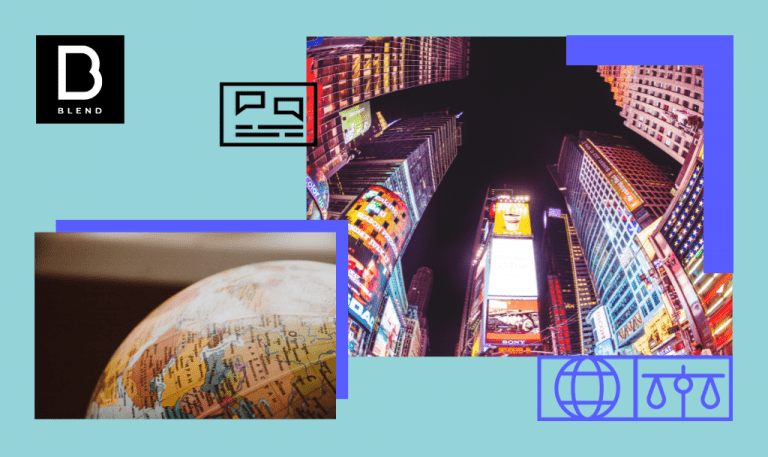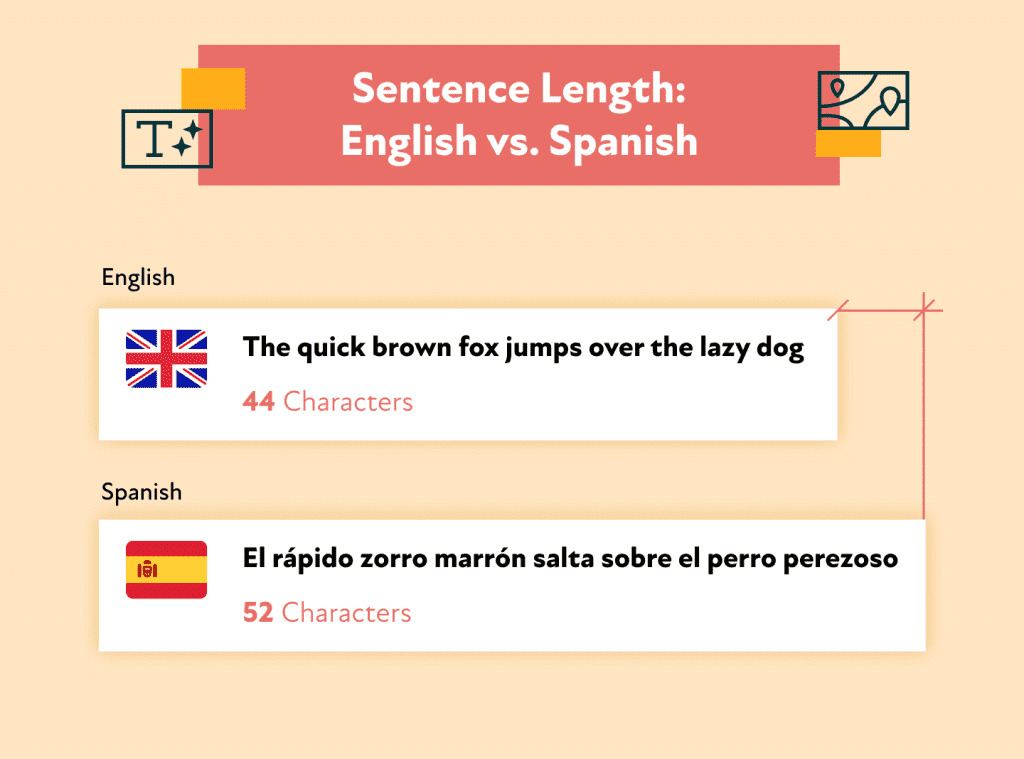Corinne Sharabi
Corinne is the Social Media and Content Lead at BLEND. She is dedicated to keeping global business professionals up to date on all things localization, translation, language and culture.


Today, effective marketing and advertising translation techniques are indispensable for international companies aiming to connect with diverse audiences worldwide. This article explores the essential strategies and considerations of advertising translation services that empower businesses to transcend linguistic and cultural barriers, ensuring their messages resonate authentically across borders.
Advertising translations encompass the conversion of marketing content to effectively reach a full target market or audience through translation, transcreation, and localization. This comprehensive approach ensures that advertisements are not just linguistically accurate but also culturally resonant, capturing the essence of the message while adapting it to diverse global markets.
Adverts come in many forms: from TV, movie, and radio to newspaper, magazine, website, and social media advertisements. If your brand or company is looking to expand internationally then you definitely need a translation of your marketing and advertising campaigns. Translations of advertising are complex processes, but get them right and you’ll discover a whole new audience for your product or service. Advertising translation involves converting an advert designed for one audience into a format that reaches a wider, international audience. This process doesn’t just cover direct language-to-language translation but also social, cultural, and linguistic factors.
1. Pepsi’s “Come Alive with the Pepsi Generation” in China:
2. KFC’s “Finger Lickin’ Good” in China:
These examples highlight the importance of accurate and culturally sensitive translation in advertising to avoid unintended meanings or humorous interpretations.
The role of translation in advertising is to offer a gateway to engage audiences beyond one’s native language. The process of translating, localizing, and transcreating advertisements opens doors to the burgeoning global marketplace, offering numerous advantages for businesses. By adopting this approach to translate advertising content, companies can broaden their customer base, bolster brand presence, and boost sales.
Localization of advertising conveys a message of tailored marketing efforts directed at specific demographics. Research reveals that despite the dominance of English on the internet, it reaches only a quarter of all online users. This extends to advertising, as evidenced by Fortune 500 companies reporting a 2.04-fold profit improvement and a 1.27-fold increase in earnings per share through translation investments (CSA translation research). Moreover, localized mobile ads outperform their English counterparts, demonstrating a 22% rise in conversions and a 42% increase in click-through rates (Adotas).
If you want to go global with your product but only advertise or post content in English, you’re missing out on customers in non-English speaking regions and countries. By translating adverts into multiple languages, you save the cost of creating new content for each target audience. The wider your audience, the higher your click-through, conversion rates, sales, and reputation will be.
Getting your advertising translation right opens the door to vast sales opportunities.
To do this successfully, your marketing and advertising translation warrants serious attention and investment. Netflix demonstrated just that – in 2021, Squid Game (produced in South Korea) reached 111 million fans around the globe. This made it the biggest series launch ever. Netflix achieved this by doing a comprehensive pre-launch advertisement translation process, into almost every global language! While not every brand will have the resources Netflix had, there are several things you can do to give your brand an international audience.
Creating a successful advert is something of an art form. It has to be catchy and memorable while conveying information about your product in a brief snippet of TV, cinema, and radio time or the time it takes to turn a page for print adverts. To create this resonance with audiences, advertisers rely on humor along with social, cultural, and historical references. These references, however, rarely translate or travel well.
This is where local cultural context comes into its own. For example, creating a video advertisement in French that talks about Parisian fashion won’t resonate with French speakers in Montreal, Canada.
Examples of brands that have successfully cracked social media platforms and cultural contexts include Nike (with its use of local talent), Oatly (by advertising in different languages), Vogue (by highlighting local influencers), and Netflix (by researching localized viewing habits).
Rhetoric is the persuasion tool of successful advertising campaigns. Not only do adverts need to increase our knowledge of a brand, but they also need to persuade us that we should buy or use it. An energy company that promotes itself as “clean” might seem contradictory, but if its rhetoric talks about its impact on the environment and how it proposes to deal with this, then consumers are more likely to consider its products. Statistics can also form part of an ad’s rhetorical context. For example, if a toothpaste advert promises to leave our teeth 40% whiter than other brands can, this sounds like a reasonable and persuasive statistic.
English might be the most used business language in the world but it is not the most spoken native language. It is outranked by Mandarin Chinese and Spanish. Studies consistently show that even with a good knowledge of English, people feel more comfortable browsing and shopping in their first language. By translating the context advertising your advert into local languages, you increase the potential of inspiring trust and loyalty in existing and future customers. Linguistic context doesn’t stop at literally translating the words in a text. It also involves paying close attention to language-specific cultural references and idiomatic expressions.
No matter how perfectly your advert is worded in English, if you want international success, it will need to be translated very carefully. It is easy to cause offense by using the wrong word or phrase in translation. For example, Kentucky Fried Chicken (KFC) made a costly mistake in China. Its iconic “finger-licking good” slogan translated into Chinese as “eat your fingers off”! Not the right image KFC wanted to project for its tasty food.
Identifying the right advertising channels is the first step in effective ad translation. Understanding the preferences of your target audience, whether they lean towards traditional media like newspapers or the digital realm, is crucial. However, successful advertising translation goes beyond mere word substitution. Let’s explore the best practices and get you inspired:
When planning for advertising translation, consider which printed media advertisements and marketing channels are most popular with your intended audience. In many countries, magazines and newspapers are more favored by the older generation, while the demographics of cinema advertising depend on the rating of the film. Across the globe, however, digital and social media advertising is king. Every single day, 112 million+ people watch at least one YouTube video, 206 million people use Twitter, and a staggering 1.62 billion people visit Facebook
Once you’ve researched cultural, rhetorical, and linguistic contexts and decided on your advertising channel, it’s time to translate your content. Don’t be tempted, however, to simply swap the words in one language for words in one language to another one. Use creative transcreation instead.
This involves blending translation with creativity to adapt your content. Your core message is retained, but every other aspect such as images, video, straplines, text, and even brand or product names are put under the microscope. Do it right and you’ll create the customer response you want wherever they live.
Advertising is all about getting a memorable message across quickly using a combination of words and images. While the graphic design of your advert may work perfectly in English, translating it into another language can have a huge impact on it.
For example, a message that takes 30 words to say in English may take twice as many in Spanish. In other languages such as Finnish or German, individual words are much longer than they are in English while writing in Arabic or Cyrillic may take up more room on the page. Keep your original message brief and to the point, and you’ll have more flexibility in making design tweaks.

Video content is a major tool in advertising campaigns with nine out of ten consumers saying they’d like to see more video content when shopping online. Get the audio-visual content of your landing page right and it could convert 80% or more of your visitors into paying customers! Translating and transcreating video content is similar to the process involved in static advertising but with some extra elements to consider.
You may need to reshoot some of visual and audio elements and elements to take account of cultural contexts. Consider whether the people in your video are appropriately dressed and whether cars are driving on the right side of the road. Remember as well, that it may be strange for video content seen in the Middle East to contain snowy scenes shot in Scandinavia. The next decision is whether to dub content using professional voiceover actors or to use subtitles translation services (or both). You’ll also need to decide on the format of your audio-visual content. Examples include:
Creating a brilliant ad that showcases your brand or product and delivering it to audiences around the globe is not the end of the story. You need to monitor whether your campaign is successfully delivering your message and driving new sales. There are different ways of objectively monitoring your campaign. One of the most effective methods for testing email advertising is A/B testing.
Send one version of your email ad to 10% of your mailing list and a second version to another 10%. Analyze which one gets the most reads and clicks and forward that to the rest of your mailing list. For print, TV, or social media ads, monitor how much the website traffic or call volume increases during the period the ad is live. With this data at your fingertips, you can adapt your advertising to improve conversion rates. Don’t forget to repeat the monitoring exercise every time you update an ad or release a new one.
The key to achieving professional results for your marketing and advertising translation is to use expert advertising translation services. If you’re happy to be hands-on with the translation process, seek out freelancers with expertise in your product area. Alternatively, use the expert localization services we offer at BLEND
Our BLEND translators, transcreators, and localizers are experts in advert and advertisement translation and branding translations. Our platform offers:
If you’re ready to get your international advertising started, contact BLEND today for a free quote.
What our customers are saying